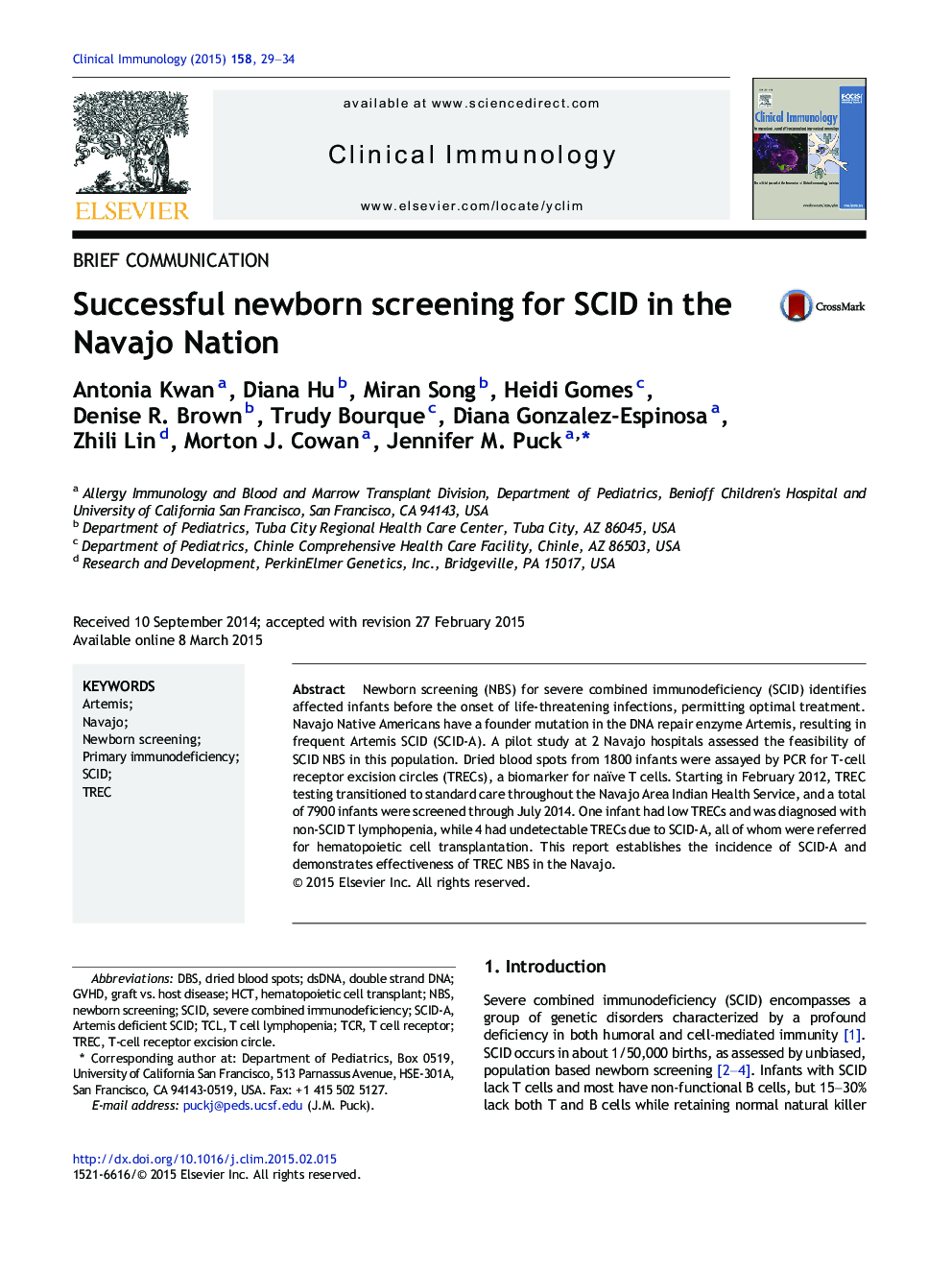| Article ID | Journal | Published Year | Pages | File Type |
|---|---|---|---|---|
| 6087283 | Clinical Immunology | 2015 | 6 Pages |
â¢A research study found SCID newborn screening feasible for Navajo Native Americans.â¢When face-to-face consent was required, only two thirds of infants were screened.â¢Artemis-deficient SCID due to a founder mutation was identified by screening, permitting early treatment.â¢Population-based screening confirmed SCID in 1 per 2000 Navajo births.
Newborn screening (NBS) for severe combined immunodeficiency (SCID) identifies affected infants before the onset of life-threatening infections, permitting optimal treatment. Navajo Native Americans have a founder mutation in the DNA repair enzyme Artemis, resulting in frequent Artemis SCID (SCID-A). A pilot study at 2 Navajo hospitals assessed the feasibility of SCID NBS in this population. Dried blood spots from 1800 infants were assayed by PCR for T-cell receptor excision circles (TRECs), a biomarker for naïve T cells. Starting in February 2012, TREC testing transitioned to standard care throughout the Navajo Area Indian Health Service, and a total of 7900 infants were screened through July 2014. One infant had low TRECs and was diagnosed with non-SCID T lymphopenia, while 4 had undetectable TRECs due to SCID-A, all of whom were referred for hematopoietic cell transplantation. This report establishes the incidence of SCID-A and demonstrates effectiveness of TREC NBS in the Navajo.
